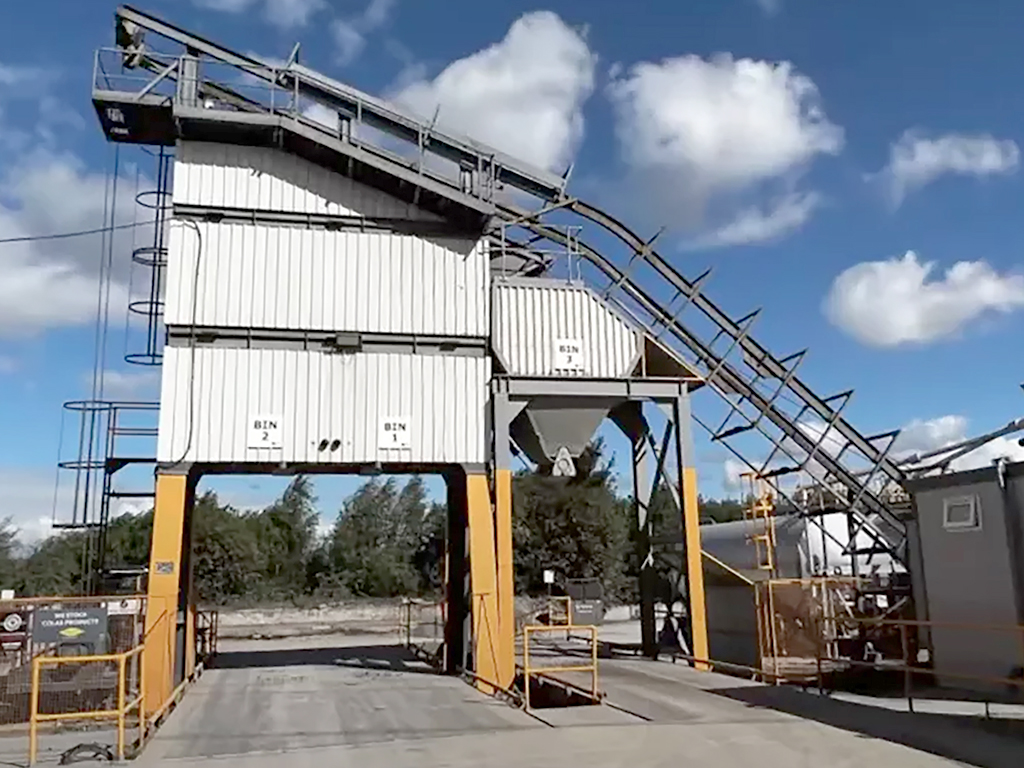
by Rebecca Hannant
East Riding Council’s planning committee has blocked plans for an asphalt plant in Brandesburton for a second time.
Newlay Asphalt had submitted a revised application for the plant after its initial proposals were rejected in August 2022. At the time, council planners said the development, “by virtue of its overtly industrial appearance, would have a significant adverse visual impact on the rural character of the area”.
Jamie Brown, operations manager at Newlay Asphalt, said: “After our previous application at the Partings, Catfoss Lane, was turned down, Newlay Asphalt sat down to assess the reason why.
“We realised it was purely down to the location and the visual impact that plant would have on the proposed site as all the planning and environmental criteria in our application had been met and accepted by the planning committee.
“This led us to look for an established local industrial site, one where the plant would not have a visual impact and would fit in with its surroundings. The site had excellent road links to all major routes in East Yorkshire allowing us to avoid travelling through local villages.
“On this industrial site there are several large businesses involved in haulage and associated industries who are operating at the same hours the plant will be open.”
While representatives of Newlay Asphalt insist that its revised application addressed environmental concerns, local campaign group Communities Reject Asphalt Plant said the development was not wanted in the area due the increased traffic, noise, environmental damage and reliance on rural roads. In total, the application received 347 objections before it was discussed by the council’s planning committee on August 17, including from East Yorkshire MP Sir Greg Knight and Brandesburton Parish Council.
Speaking at the planning meeting, Jackie Suthenwood, leading campaigner of the Communities Reject Asphalt Plant group, said: “The committee agreed that the predominant rural character of the area would be damaged.
“The report suggests that planning criteria are wholly met. However, the policies state that such development should protect residential amenity and other users on site, address climate change, support growth and diversification of the economy, enhance sustainable transport, promote high-quality landscape, and manage environmental hazards.
“Heavy industry creating air and noise pollution does not protect the amenity of those working and living directly alongside on a site used for light industry and storage. A power-hungry plant and more HGV traffic does not address climate change. Losing jobs from existing businesses and a successful tourism offering does not support the economy. A 20m-high chimney dominates the landscape.”
Jackie also identified that under national planning policies, applications should contribute to and enhance the local environment. However, she said that those living and working near the proposed developments including doctors, chemists and health and safety experts had voiced their concerns over the potential dangers of the development including flood and foul water management and its effect on local water courses, power provisions, noise pollution, and health risks associated with chemicals used in production.
She also addressed the highway safety concerns on the heavily used A165 and the A1305 with the potential that the increased presence of HGVs could lead to more tailbacks and air pollution.
She added: “There is large-scale asphalt production in Hull where there is major road building and construction – there is no such development round here. There is no functional need. Other locations have existing and growing industrial sites far more suited to a heavy industrial plant than here. The location is not appropriate.
“What images do you associate with Brandesburton? Farming, sports and leisure, walking, cycling, horseriding, golf, water sports, caravan camping and holiday parks – a rural environment.”
Jamie Brown added: “We are aware this application has still been met with concern from local parish councils and residents. Incorrect and misleading claims continue to be mentioned on social media and local press regarding omissions and plant processes.
We have listened to these comments and commissioned a comprehensive suite of assessments covering noise, traffic and environmental and ecological impact.
“All these EHO-approved assessments have concluded that there are no adverse or significant impacts on any of the nearby receptors or the road infrastructure and it is acceptable in residential amenity terms. We have several large contracts within East Yorkshire which we supply from Dewsbury. The current local asphalt plants do not have the capacity to supply the demand in East Yorkshire.
“The position of the proposed site is not only centrally placed to supply all East Riding Council depots, but it will massively reduce the road miles which are built on a yearly basis by us and other companies alike.
“In the first seven months of this year, we have accumulated over 15,000 road miles delivering into East Yorkshire from our Dewsbury site. So, applying for the same contracts from our Brandesburton site would see an 80 per cent reduction in road miles, and a huge reduction in carbon emissions. It can only be a positive step forward for the local environment.”
Addressing the use of materials used to make the asphalt, Jamie added: “The scheme will have warm mixed asphalt allowing us to produce materials 40 degrees less than hot mix reducing odour by 90 per cent and a 35 per cent reduction in fossil fuel. Along with the use of recycled asphalt planings and recycled eco-glass sand in our materials, we are lowering our use of virgin aggregates.
“As you can see, Newlay is a company progressing and making advancements in environmental processes and reducing our carbon footprint.
“We have considered that we have more than demonstrated the suitability of the proposed development in highway amenity and visual terms. We recognise that the scheme has contracted local objections, but your officers have assessed the application in considerable detail and have come to the same conclusion as ourselves that this is an acceptable scheme.”
Despite this, 13 councillors on the planning committee voted to reject the application.




